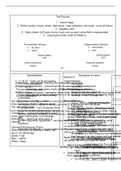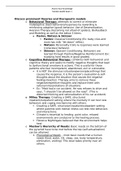Summary
Summary Cognitive Psychology Flashsheet
- Course
- Institution
- Book
Throughout the year, I summarised my class notes on this flash sheet and actually used this to revise for my exam. I got a first so I'd say it worked! Hope it helps.
[Show more]






